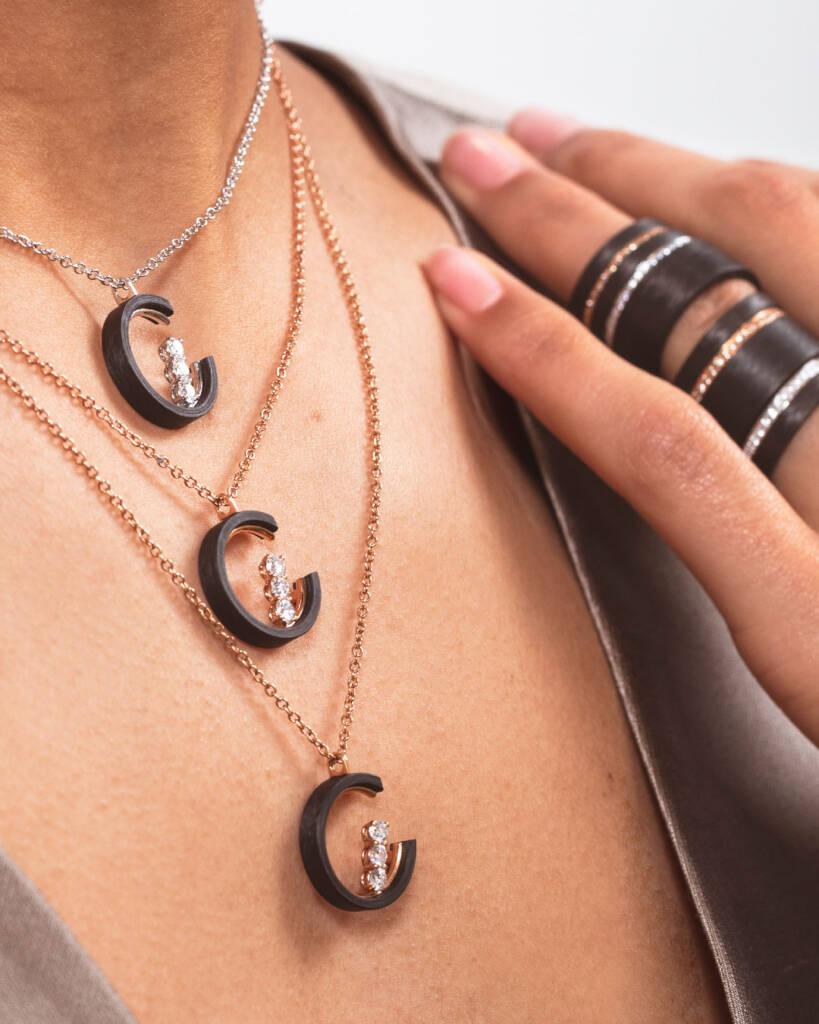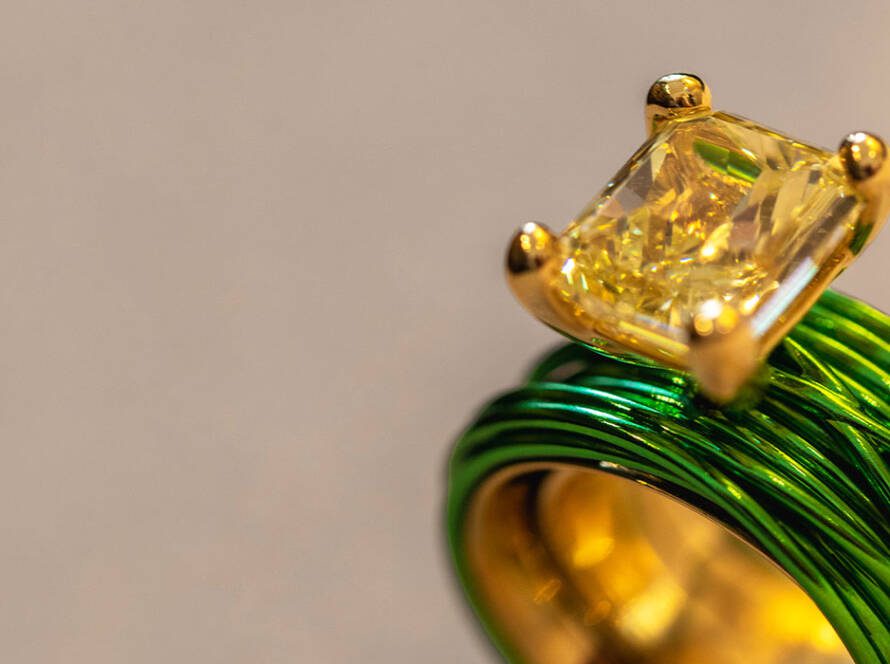LAB grown diamonds
“Lab-created diamonds are not fakes. They have all the same physical and chemical properties of a mined diamond.” says Stephen Morisseau, a spokesman for the Gemological Institute of America, a nonprofit organisation that oversees the international diamond grading system.
The first is a ‘natural’ diamond, created by forces deep within the Earth. The second one was developed in a laboratory. A lab-grown diamond is a diamond: it is chemically, physically and optically identical to a mined diamond. (GIA.edu)
Both are diamonds.
When, in 1890, Japanese entrepreneur Kokichi Mikimoto was able to create a cultured pearl industry over a hundred years ago, it was just a matter of time before the same process began to transform the diamond industry as well.
Today diamonds are undergoing the same development as pearls.

1. What exactly is a LAB grown diamond?
Lab grown diamonds are a great example of how scientists nowadays can help us make more sustainable choices.
One is grown above ground, while the other is extracted from below. Simply put, it is a real diamond. The difference comes from its point of origin.
Leading gemologists from the HRD, GIA, and IGI confirm that lab-grown diamonds are diamonds.
Naturally occurring diamonds are forged in the crushing pressure and immense heat of the Earths’ mantle, around 180km underground. Most were formed between 1 to 3 billion years ago, at a time when our planet was much hotter than it is today.
Today, diamonds can be grown from a piece of seeded carbon in controlled laboratory conditions – molecule by molecule, layer by layer.
2. Is there an unique to grow them?
The standard method of growing diamonds has been the High Pressure High Temperature (HPHT) system: the seed is placed in a chamber amidst pure graphite carbon; exposed to temperatures of about 1,500°C and pressurised to approximately 60’000 atmospheres. It takes hours or weeks to grow a diamond, depending on the size required.
Reactors reproduce in the laboratory the exact same conditions that form diamonds naturally. After applying tremendous pressure and very high temperatures, under highly controlled conditions, the small diamond seed begins to grow, emulating the natural process. The result is a rough diamond which can be cut and polished for use in jewellery, just like any other naturally mined diamond.
The key driver behind this development is time: no customer will wait a billion years for their perfect diamond. Even then, mining rarely delivers perfect diamonds. The jewellery market is saturated with artificial goods, generating increasingly high expectations for the clarity, shape, and size of diamonds.
The method used to develop diamonds in laboratories has become the new normal in the jewellery industry.

3. How will lab-grown diamonds affect the mined diamond market and the fine jewellery world?
Will start-up companies lead to the fall of the entire diamond industries? No, lab-grown diamonds are actually the start-up of the diamond industry.
There is enough space for mined stones and for lab grown diamonds to coexist.
We don’t close our eyes to innovation, valuing only traditions. Like we didn’t do it with hybrid car technologies, smart phones, or TVs – these alternatives became happily our new normal.
The 3 major diamond laboratories, GIA, HRD and IGI, provide grading reports certifying the quality of the stone, parameters and of the source being laboratory-grown.
The facts speak for themselves: lab-grown diamonds are a rapidly growing trend. Their transparency is guaranteed, and their growth on the market has been up to 20% per season. They give us a huge potential for experimentation and innovation in jewellery design, thanks to their unique affordability.
Lab-grown diamonds offer jewellers much more freedom when creating new pieces. Thanks to the closely monitored growing process in the laboratory setting, the shape and size of the diamond can be easily controlled.
The future is a high-tech world, where lab-grown diamonds are accepted as the new norm. In this way, they are the perfect symbol of our modern world.
4. What is the most important thing about my diamond jewellery?

This is the secret about diamonds: the story of their value isn’t about their price. It’s emotional. It’s about memories, moments, and occasions. It’s about our customers’ journey, about those moments which are enriched by diamonds. It’s for these reasons that diamonds keep their value for so long, well beyond our own lifetimes. And this is true of both lab-grown and mined diamonds.
Beautiful diamond jewellery is also perfect for the new kind of customer: the self-gifting woman. The growing trend of women buying beautiful items for themselves is only gaining popularity, and won’t be going away any time soon.
At Karine Parras, our driving question remains the same: how can we ensure our customers remain happy and confident as the diamond market develops and transforms?
The answer is to keep growing with our customers, and continue to guarantee the quality they have come to expect.
Since Karin first began dealing at the Antwerp Diamond Stock Exchange, her motto has always been, and always will be, to stand for the customer – stand for the quality of our stones, our style and our execution.





